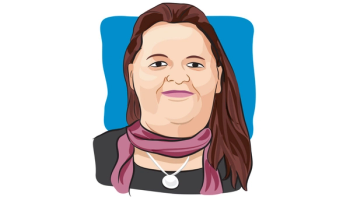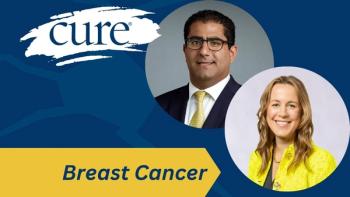
My Story of Hope After Being Diagnosed With a Cancer I’ve Never Heard Of
Key Takeaways
- A 15-year peritoneal mesothelioma survivor defied typical patient demographics, initially misdiagnosed during pregnancy.
- Hyperthermic intraperitoneal chemotherapy (HIPEC) was pivotal in her treatment, significantly improving her prognosis.
I don’t fit the profile of someone who gets diagnosed with mesothelioma, so my diagnosis came as a shock.
Just by looking at me, I bet you couldn’t guess that I am a 15-year and counting peritoneal mesothelioma survivor. Most times when I tell people their mouth drops. Then they proceed to ask, “what’s mesothelioma?”
To be honest, when I first found out I had peritoneal mesothelioma, I didn’t know what it was either.
When I was pregnant, I was misdiagnosed with a fibroid tumor, as I certainly did not fall into the patient population that typically gets diagnosed with mesothelioma, a type of cancer that’s caused by asbestos exposure. If you look online now you will probably see that the statics show that the typical patient is an older man in his mid 60s, who has worked in the blue-collar industry. I didn’t check all the boxes being that I was a 21-year-old African American female … talk about not being your typical patient.
In the beginning of my journey battling cancer, I was determined to overcome it. My faith kicked into overdrive and was motivated by my newborn son to push through. Imagine being told you have cancer and 18 months to live with a cancer you’ve never heard of before.
After going to an oncologist who knew nothing about the cancer, I was referred to a specialist who introduced me to hyperthermic intraperitoneal chemotherapy (HIPEC), a treatment method where chemotherapy is delivered directly to the abdomen. This procedure was a groundbreaking one and changed my life for the better. I responded well to the treatment and surprised my medical team.
Throughout my journey, I remained hopeful. I kept pushing and never gave up. When I couldn’t see the light, I searched for it and thought about being present for my son.
I’ve been told I have a way with words and I use my talents and story to inspire others — whether it’s patients with cancer, caregivers or anyone else. The hope and joy that I see in people when they hear my story just confirms I’m in the right space. I’m grateful that I can share my experience and story.
Learning that hope is what so many people need, and I’m elated that I can give it out.
For more news on cancer updates, research and education, don’t forget to



